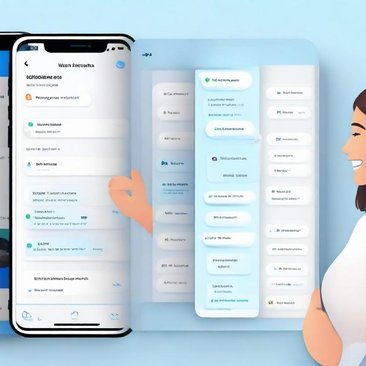Technology Goals
Flutter is a UI toolkit developed by Google that enables the creation of natively compiled, cross-platform applications from a single codebase. It allows developers to build visually attractive, fast, and responsive applications for mobile (iOS and Android), web, and desktop environments. Using the Dart programming language, Flutter provides a reactive programming model that facilitates fast and efficient app development with hot-reload capabilities, making it ideal for rapid iteration and experimentation.
Flutter’s architecture includes a rich set of customizable widgets that support both Material Design (for Android) and Cupertino (for iOS) styles, ensuring that applications look and behave natively on each platform. This eliminates the need for developers to write separate code for different platforms while still achieving high-performance, smooth animations, and a native-like experience.
In our projects, Flutter is utilized for creating feature-rich, cross-platform mobile applications, reducing development time and costs while maintaining native performance and a consistent user experience across platforms.
Strengths of Flutter in Our Projects
Flutter's primary advantage is its ability to allow cross-platform development without sacrificing performance or native features. By using a single codebase, developers can write one version of the app that runs efficiently on both iOS and Android devices. This leads to significant time and cost savings for clients, especially in cases where maintaining two separate codebases would be resource-intensive.
The hot-reload feature in Flutter allows developers to see changes in real time, which speeds up the development process and allows for quick iterations. Additionally, Flutter’s widget-based architecture makes it easier to customize UI elements and ensure that applications deliver smooth, native-like animations and interactions.
Another key strength of Flutter is its ability to compile to native ARM code for mobile devices, meaning applications built with Flutter deliver high performance, smooth scrolling, and low latency, akin to fully native applications. With growing support for desktop and web applications, Flutter extends its cross-platform capabilities even further.
Comparison with Other Cross-platform Frameworks
Compared to React Native, Flutter offers better performance, thanks to its ability to compile directly to native code, whereas React Native relies on a JavaScript bridge to interact with native components. This means that Flutter applications tend to have better performance, especially for graphically intensive apps or those requiring complex animations.
Compared to Xamarin, Flutter is generally easier to learn and has a faster development cycle due to its hot-reload feature. While Xamarin relies on C# and .NET, Flutter’s use of Dart, a language designed for UI development, makes it more suited to mobile and cross-platform applications.
Flutter’s comprehensive set of widgets and unified design system allow developers to create consistent and visually attractive user interfaces, something that can be more challenging with other frameworks. Additionally, Flutter’s growing ecosystem of packages and plugins enables seamless integration with native features, APIs, and third-party services.
Real-world Applications in Client Projects
- E-commerce Mobile Application: For an e-commerce client, we used Flutter to build a cross-platform mobile app that supports both iOS and Android. The app includes real-time product updates, an integrated payment system, and user-friendly navigation. Flutter allowed us to deliver the app to both platforms with a unified codebase, significantly reducing development time and ensuring a consistent user experience.
- Healthcare Management App: In a healthcare project, Flutter was used to build a patient management app with a responsive design that works on both tablets and smartphones. The app allowed medical professionals to manage patient data and appointments, while real-time notifications ensured users received updates instantly. The Flutter framework’s flexibility helped maintain performance across various devices and screen sizes.
- Educational Platform: For an educational startup, Flutter enabled us to create a mobile learning app that supports video streaming, quizzes, and progress tracking. Flutter’s widget-based UI allowed us to deliver a highly interactive and engaging user experience, while the single codebase approach made it easy to roll out updates and new features on both platforms simultaneously.
Client Benefits and Feedback
Clients have consistently praised Flutter for its ability to deliver high-quality, cross-platform applications with native performance. One client in the e-commerce sector highlighted the speed with which they were able to bring their mobile app to market, thanks to Flutter’s unified codebase. Another client in the healthcare industry appreciated Flutter’s flexibility in handling complex UIs and its ability to ensure smooth performance across a range of devices.
By reducing the need for multiple development teams (one for iOS and one for Android), Flutter allowed clients to significantly cut down on development costs and time. The result is faster time to market and lower maintenance overhead.
Conclusion
Flutter offers a powerful and flexible solution for building cross-platform applications with a native look and feel. Its single codebase approach, high performance, and rich UI components make it ideal for delivering fast, visually appealing mobile, web, and desktop applications. Whether used for building e-commerce platforms, healthcare management systems, or educational tools, Flutter ensures faster development cycles, lower costs, and a seamless user experience across platforms.





